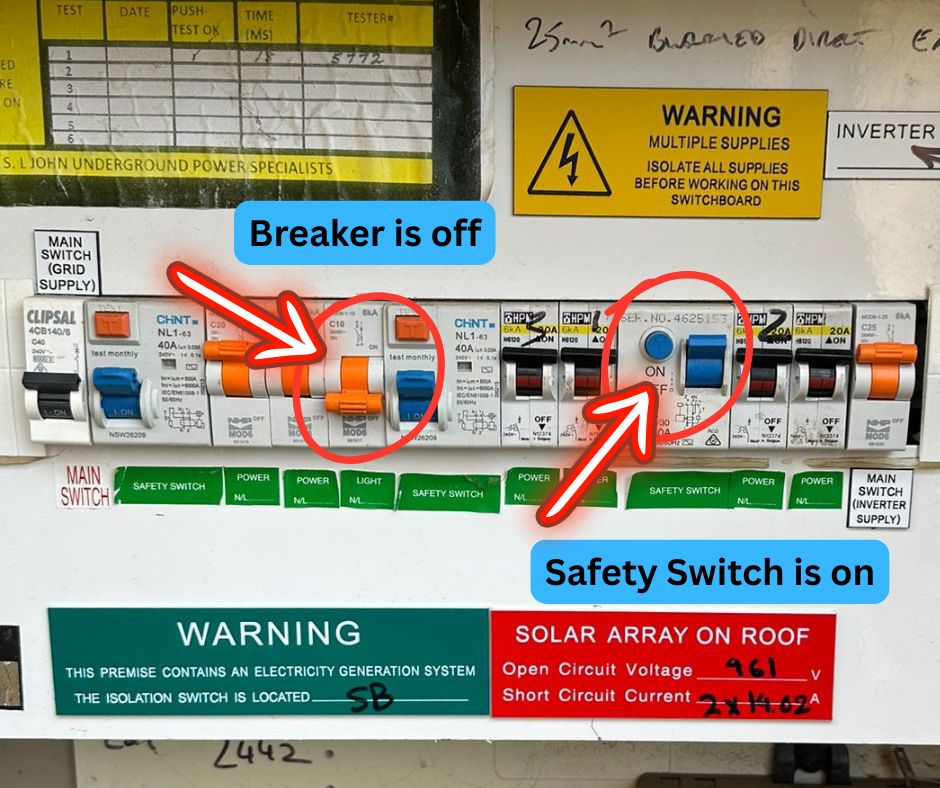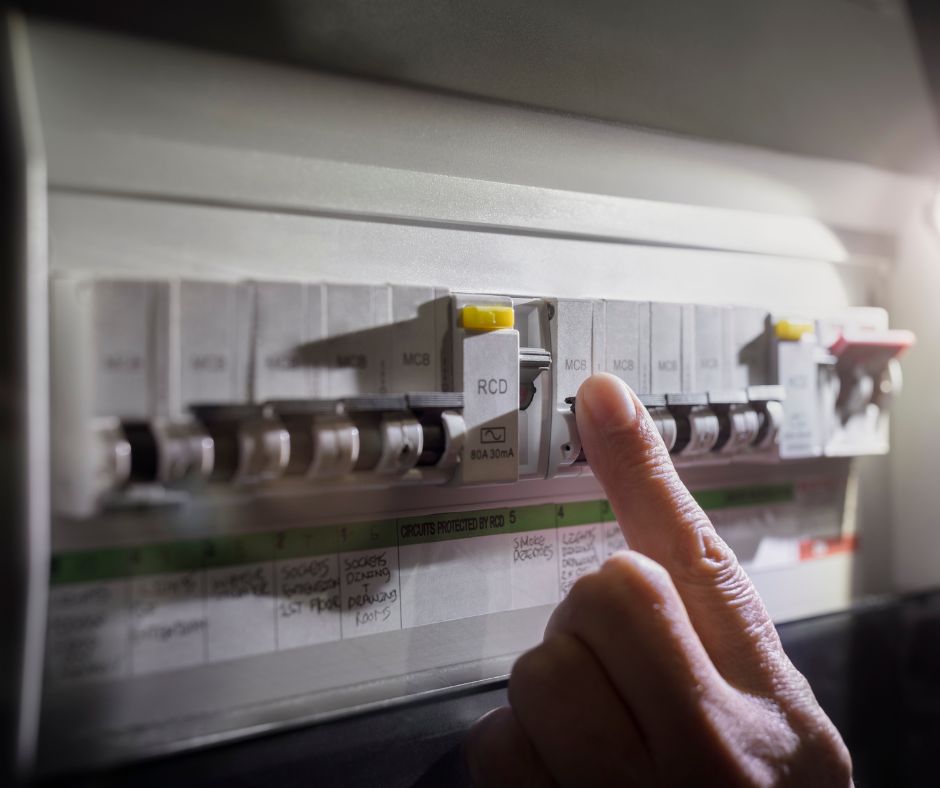Identify Common Reasons Behind Circuit Breaker Trips in Your Home for Safety and Efficiency
When a circuit breaker consistently trips, it serves an essential role in protecting your home by preventing potentially dangerous electrical faults. This recurring issue usually arises from several common causes, including overloaded circuits, short circuits, malfunctioning appliances, or underlying wiring problems that may not be immediately visible. If you notice that your breaker is tripping frequently, it is crucial to investigate the root cause of this issue. Consulting a qualified electrician can help you address these problems promptly, ensuring both the safety of your home and the proper functioning of your electrical systems.

Proven Techniques for Troubleshooting Circuit Breaker Trip Issues Effectively
If your circuit breaker switches off immediately after being reset, this clearly indicates there is a problem within your electrical system. The breaker is doing its job by cutting off power to prevent potential hazards or more serious electrical issues from developing. Addressing these complications swiftly not only ensures the ongoing safety of your electrical system but also helps avoid further complications that could arise from neglecting the problem.
Homeowners in Werribee, Altona, and Point Cook often reach out to us with concerns about this troubling issue. Although it can be quite inconvenient, this occurrence often serves as an initial warning sign of more severe electrical problems that could pose significant risks if not addressed promptly. It’s essential to take these warnings seriously to maintain a safe living environment.
This article will explore the various causes behind circuit breaker trips, provide actionable troubleshooting steps you can take, and explain how Electrx can effectively assist you in resolving these electrical challenges.
Understanding How Circuit Breakers Function to Protect Your Home from Electrical Hazards
Circuit breakers are engineered to act as automatic safety devices that protect your home by interrupting electrical power under specific conditions. These conditions can include:
- Excessive current flowing through a circuit, which can lead to overload situations that pose safety hazards.
- Short circuits that could potentially cause dangerous electrical faults.
- Power leakage to the ground, indicating an earth fault that compromises safety.
- A faulty breaker or one that is nearing the end of its operational life may fail to operate as intended.
Unlike traditional fuses, circuit breakers respond swiftly to potential threats, providing an advanced safety mechanism that doesn’t rely on melting wires to halt current flow. This capability ensures a safer environment for your family and property by minimizing the risk of electrical fires and other hazards.
Identifying Why Your Circuit Breaker Fails to Remain Reset: Common Issues Explained
If you’re frequently resetting the breaker only to have it trip again almost immediately, this suggests there is an active fault present within that specific circuit. Understanding the common causes can significantly aid you in diagnosing the issue, leading to a quicker resolution and restoration of service.
The primary culprits that often result in this frustrating scenario include:
Exploring Overloaded Circuits: A Common Electrical Challenge for Homeowners
Overloaded circuits are a prevalent electrical problem, particularly when multiple high-draw devices—such as kettles, toasters, or heaters—are used simultaneously on the same circuit. The cumulative load can easily exceed the safe capacity of the circuit, prompting the circuit breaker to trip as a protective measure against overheating and the potential for fire hazards that threaten your home’s safety.
Investigating Whether Faulty Appliances Are Causing Circuit Breaker Trips
In some cases, the source of the issue may lie within the devices that are plugged into the circuit, rather than the wiring itself. Appliances such as heaters, older refrigerators, and dryers are often common offenders; internal faults within these devices can lead to short circuits or current leakage, causing the breaker to trip unexpectedly and frequently.
The Dangers of Short Circuits and Their Common Underlying Causes
Short circuits occur when damaged wiring, rodent infestations, or crushed insulation allow live wires to come into contact with the earth or neutral wires directly. This dangerous condition can cause the circuit breaker to trip rapidly to prevent hazardous outcomes that pose serious risks to your property and personal safety. Recognizing these signs early can help mitigate severe consequences.
Understanding Earth Leakage and Its Critical Role in Electrical Safety
Moisture infiltration in outdoor outlets, garden lighting setups, or under-house cabling can create an environment conducive to current leakage into the ground. This situation may prompt Residual Current Devices (RCDs) to trip as a precautionary measure, ensuring the safety of your electrical system and preventing potentially dangerous situations from arising due to electrical faults.

Proactive Steps to Take When Your Circuit Breaker Trips Unexpectedly
- Unplug all devices connected to the outlets on the affected circuit. This action helps eliminate any potential sources of overload and allows you to effectively ascertain the cause of the issue.
- Reset the circuit breaker by flipping it back to the ‘on’ position, enabling it to function normally once more.
- If the breaker remains active, begin plugging your devices back in one at a time, observing closely to identify the source of the problem.
- When the breaker trips again, you will have successfully pinpointed the faulty device that needs further inspection or replacement for safety.
- If the breaker continues to trip even with no devices connected, it is essential to contact our team for professional assistance without delay.
Utilize our Fault Finding Service to receive a thorough and prompt diagnosis of your electrical issues, ensuring that your safety and peace of mind are prioritized throughout the process.
Knowing When to Stop Resetting Your Circuit Breaker to Prevent Damage
If your circuit breaker frequently trips or refuses to reset altogether, you should take the following precautions to protect your home’s electrical system:
- Do not keep resetting the breaker—this action can place undue stress on the entire electrical system, potentially leading to further complications and serious hazards.
- Avoid swapping breakers between different circuits, as this practice may exacerbate existing issues and create additional problems.
- Do not attempt to replace the breaker yourself—this not only violates legal regulations but also presents significant safety risks to you and your property.
We have observed numerous cases where DIY resets have led to damaged boards or even catastrophic house fires. Trust our skilled professionals to safely and effectively trace the underlying issue and provide a reliable solution that restores normalcy to your electrical system.
What You Can Expect When Electrx Handles Your Circuit Breaker Problems
When our dedicated team at Electrx responds to a reported circuit breaker fault, we conduct a comprehensive assessment that includes:
- Testing the circuit with specialized clamp meters and insulation testers to ensure safety and reliability throughout your entire electrical system.
- Inspecting all outlets, fittings, and switchboard connections for any signs of irregularities or wear that may indicate potential issues.
- Examining appliances that may be contributing to the fault for any internal issues or defects that require immediate attention.
- Replacing the circuit breaker or RCD if we determine it has failed during our thorough assessment process.
- Repairing any damaged cabling or terminals that pose a safety risk to your electrical system, ensuring full compliance with all safety standards.
- Issuing a Certificate of Electrical Safety upon the successful completion of our work, ensuring compliance with industry safety protocols and regulations.
If your switchboard is outdated or lacks sufficient safety switches, we may also recommend a Switchboard Upgrade to enhance safety standards and protect your home effectively from electrical hazards.
Understanding Circuit Breaker Lifespan and Recognizing Signs of Impending Failure
Circuit breakers, like any mechanical devices, have a limited operational lifespan. If your breaker is tripping excessively or fails to reset smoothly, this may indicate a fault that requires immediate attention from a qualified professional.
Indicators that your circuit breaker may be nearing failure include:
- Feeling hot or loose to the touch, which indicates potential overheating and could pose serious risks.
- Tripping without any apparent cause, suggesting underlying issues that require thorough investigation.
- Requiring significant effort to reset, which is a clear sign of malfunction that should not be ignored.
- Flipping even when no load is connected, pointing to possible internal faults that must be addressed without delay.
We maintain a selection of modern, compliant replacements readily available and can promptly replace faulty breakers to ensure the safety and reliability of your electrical system.

Frequently Asked Questions About Circuit Breakers: Expert Answers
Can I legally replace my circuit breaker myself?
No, according to Victorian law, only a licensed electrician is authorized to safely and legally replace circuit breakers in residential settings, ensuring compliance with safety regulations.
Why does my circuit breaker trip when I operate the heater?
Heaters typically draw a significant amount of current. If they share a circuit with other high-power devices, this can lead to an overload situation, causing the breaker to trip as a protective measure against overheating and potential damage.
Can a faulty outlet cause my circuit breaker to trip?
Yes, damaged or melted outlets can short internally, leading to the breaker tripping each time the circuit is energized, which creates hazardous conditions requiring immediate attention from a professional.
Is this a situation that requires immediate attention?
Absolutely, especially if the breaker fails to reset, affects critical appliances, or shows signs of burning or overheating that could pose serious risks to your safety and property.
Understanding Circuit Breaker Problems and Finding Effective Solutions
When circuit breakers trip, it’s crucial to recognize that they do so for specific reasons. If your breaker fails to stay reset, it is vital not to dismiss this warning, as the underlying issue may reside within your wiring, appliances, or the switchboard. Electrx is well-equipped to quickly identify and resolve these concerns with efficiency and expertise.
We will manage all necessary repairs to ensure your system operates safely and reliably, maintaining its dependable performance for your peace of mind and protection against future issues.
Reach out to us for expert assistance with Melbourne Switchboards and all your electrical needs, ensuring your home remains safe and fully functional for you and your family.
Circuit Breaker Keeps Tripping or Won’t Stay Up? Here’s What It Means
The Article: Circuit Breaker Tripping? Discover What It Means first appeared on https://writebuff.com
The Article Circuit Breaker Tripping Explained: What You Need to Know Was Found On https://limitsofstrategy.com
The Article Circuit Breaker Tripping: Essential Insights You Should Know First Appeared ON
: https://ad4sc.com

One response
Your breakdown of the reasons behind circuit breaker trips really resonates with me, especially given how vital it is to understand our home’s electrical systems for safety and efficiency. I’ve dealt with frequent tripping in my own home, and it was quite the learning experience!